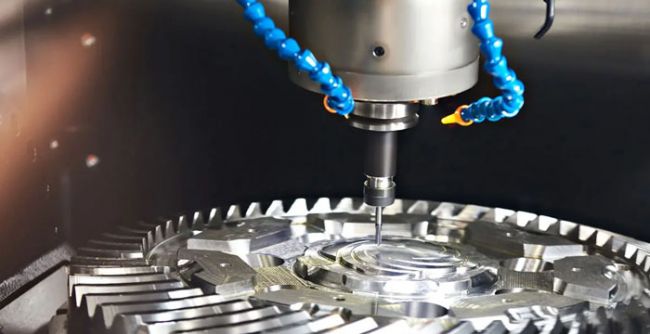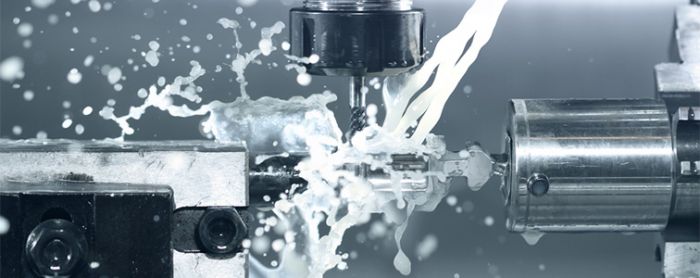Tips & Tricks
5 min read
Precision and Speed: Key Factors in Modern Manufacturing Processes


No matter if you are working in a local fabrication shop or managing a larger facility, the expectations are the same: produce quality results quickly and consistently. That’s easier said than done.
You are constantly adjusting settings, keeping an eye on timing, and relying on tools that can keep up. But even then, one weak link can slow things down or lead to errors. That’s why a deeper look at how speed and accuracy work together can be so useful. These aren’t just goals; they are the cornerstones of strong production.
In this article, you’ll learn how both play a major role in today’s manufacturing world and what you can do to improve your process, whether you're scaling up or just trying to stay ahead.

In the past, being "close enough" might have worked. But now, products often require exact measurements. Whether you are cutting, welding, or assembling, even small mistakes can lead to problems down the line.
For example, parts that don’t fit together properly can slow down the entire production. Worse, they can lead to product failure after reaching the customer. That’s why you need tools and methods that help you work with tight tolerances and repeat the same results every time.
Precision doesn’t just improve quality. In fact, it saves money. You use fewer materials, need fewer repairs, and reduce rework. Over time, this adds up to a smoother process and more profit.
Of course, accuracy isn’t enough on its own. You also need to move fast. Customers expect quicker delivery times, and production cycles are getting shorter. So, even if your products are perfect, if they take too long to build, you might lose business to someone who works faster.
This is where advanced machines and software come in. They help automate tasks that used to take hours. CNC machines, robotic arms, and real-time tracking systems allow you to keep things moving without losing control.
The key is to balance speed with precision. Rushing through a job can lead to mistakes. But with the right equipment and workflow, you don’t have to sacrifice one for the other.
When you are looking for a tool that brings both speed and precision to the table, a plasma cutter often stands out. It’s built for clean, accurate cuts and works quickly without slowing down your workflow. If your job involves cutting metal, whether it’s steel, aluminum, or another type, a cutter gives you tight, controlled results while keeping production on track.
How easily it fits into different setups makes it even more valuable. You might be running a large facility with multiple shifts or a smaller operation with a tighter team. Either way, this cutter can handle both custom jobs and larger batches without sacrificing quality or time. It’s a smart choice for anyone who needs reliable performance and consistent results every time.
Another major way to improve precision and speed is through automation. Machines that can repeat the same task over and over without getting tired are more accurate than people working by hand. And they work around the clock.
Automated systems can also collect data while they work. This lets you spot problems early and adjust before they become big issues. For example, if a machine starts to cut slightly off, a sensor can detect it and alert you.
Automation doesn’t mean replacing people. It means using machines for tasks that need to be exact or done quickly while your team handles more complex or creative work.
Even the best tools won’t help if people don’t know how to use them properly. That’s why training is a big part of keeping things precise and fast. Your team needs to know how to set up machines, check measurements, and catch mistakes early.
Ongoing training also helps workers keep up with new tools and technology. As machines get smarter, your team has to grow with them. This doesn’t just improve output, it boosts morale, too. People feel more confident when they know what they’re doing.
If you want to make your process more precise and faster, start with a few small steps. First, look at where mistakes or delays happen. Is there a step that takes longer than it should? Are there quality issues that keep coming up?
Next, think about which tools could help. Maybe it’s time to upgrade your cutting tools, or maybe you need to add sensors to track performance. Don’t forget to look at software, too. Sometimes, a simple scheduling or tracking program can save hours of time each week.
Then, invest in training. Make sure your team understands how to use each tool and why it matters. People are more careful when they know what’s at stake.
Manufacturing today is all about staying sharp and moving quickly. It’s not just about having the latest machines; it's also about making smart decisions, building a skilled team, and staying open to change. Small improvements in your daily operations can lead to better results over time. Whether it's through better planning, using the right tools, or fine-tuning how your team works together, the goal is to keep things smooth and reliable. When you look at the bigger picture, steady progress matters more than trying to fix everything at once. Focus on what works, stay flexible, and find ways to improve your process.
Be the first to post comment!